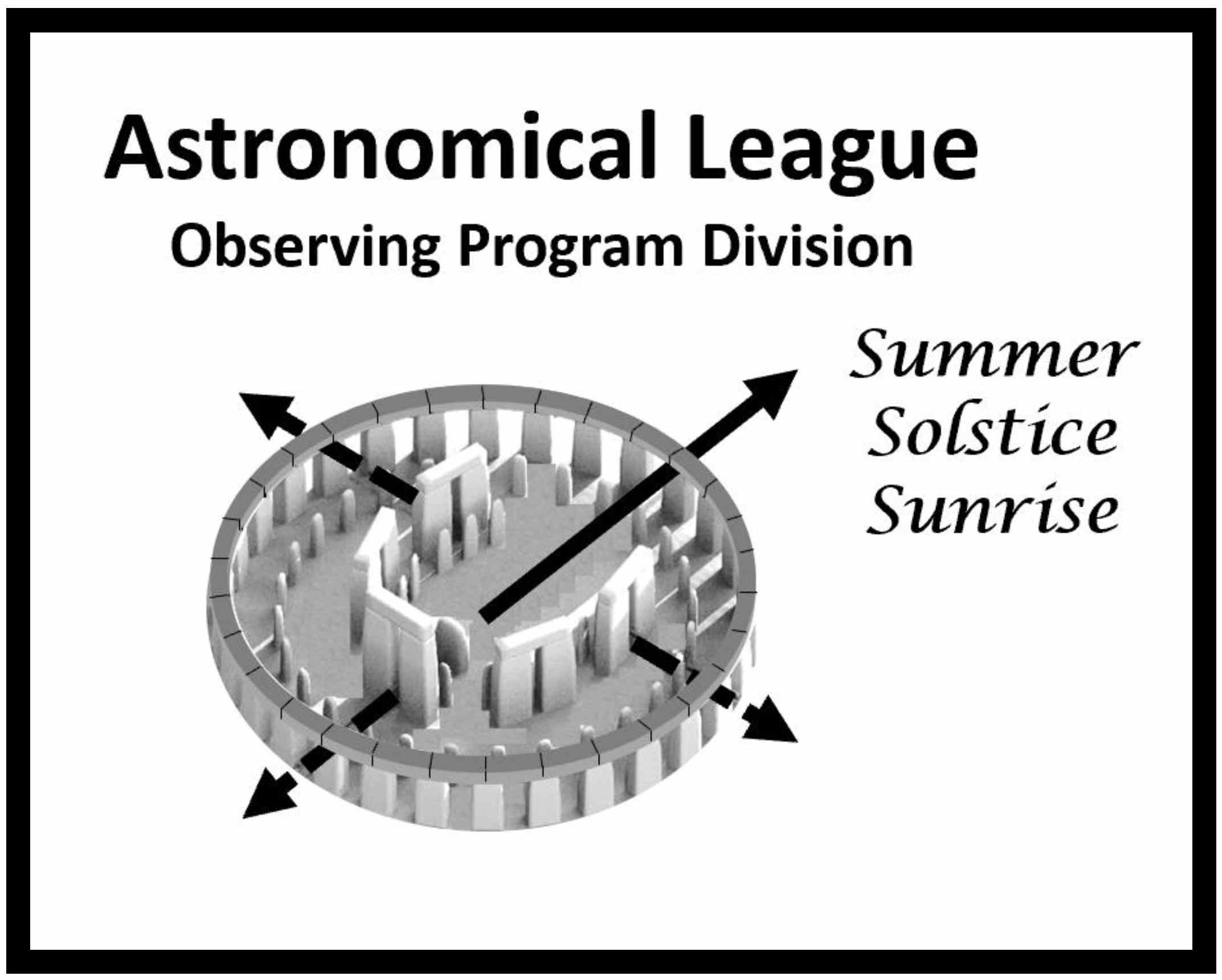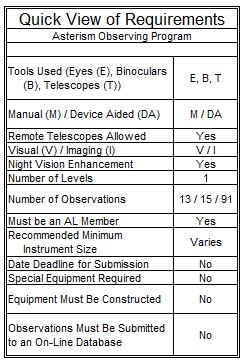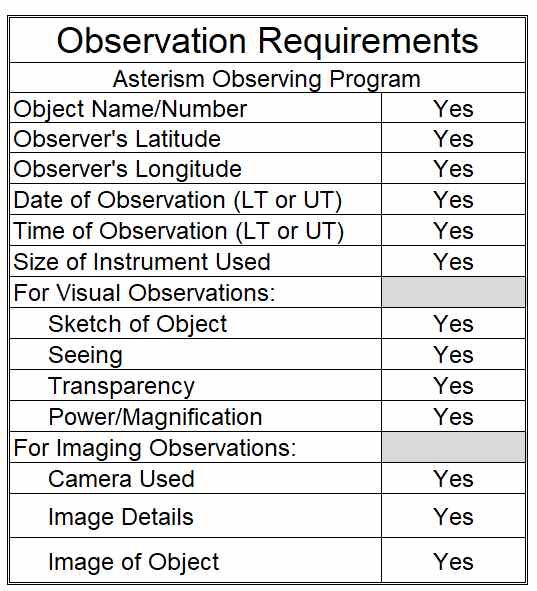Asterism Observing Program Coordinator:Cliff Mygatt |
 |
IntroductionPeople have used their imagination to create pictures in the night sky since the beginning of time. Over the years, these pictures were better defined and organized into the accepted constellations we know today. So how do we identify pictures within the bigger picture? Easy! We call them asterisms. Asterisms are a group of stars that appear to be associated with each other but are not. The most well-known asterism is the Big Dipper. The Big Dipper is only a small portion of the larger constellation Ursa Major. We use our imaginations and continue to create pictures in the night sky. This program has been designed to help everyone appreciate the beauty and uniqueness that the night sky provides. Perhaps, as you search the stars to locate the designated asterisms, you will have the opportunity to find a “picture in the night sky” of your very own.
Requirements and RulesThere are three versions of this Oberving Program:
This certification is available to members of the Astronomical League, either through their local astronomical society or as members at large. If you are not a member and would like to become one, check with your local astronomical society, search for a local society on the Astronomical League Website, or join as a Member-at-large . To qualify for the Astronomical League’s Asterism Observing Program Certificate and Pin, observe and sketch 91 asterisms from the list provided. There is also an Eyes Only certificate (all 13 objects on the list) and a Binocular certificate (all 15 objects on the list). |
 |
To record your observations, you may your own use log sheets as long as they include this information:
You may use any log sheet of your choosing as long as you record all of the required information. We recommend this log: https://www.astroleague.org/wp-content/uploads/2025/03/Observation-Log-Sheet-20241028.pdf Go-To telescopes and remote are allowed. The Asterism List has been separated into equipment categories. There is no specific requirement placed upon equipment to be used. |
 |
Submitting for Certification
| To submit your observations, mail the COPIES of your logs to the Observing Program Coordinator, along with your name, mailing address, astronomy club or Astronomical League affiliation, email, phone number, and to whom the certification should be sent. Be sure to indicate which level of certification you are pursuing. Please do NOT send your original logs, as they will not be returned. Upon verification of your observations, your certificate and pin will be forwarded either to you or your society’s Awards Coordinator, whomever you choose. |  |
Asterism Observing Program Coordinator:
Cliff Mygatt
P.O. Box 8607
Port Orchard, WA 98366
360-265-5418
cliffandchris@wavecable.com
Notes:
Acknowledgments: Special thanks to Sue French, Contributing Editor of Sky and Telescope magazine, for her time in reviewing the asterism list.
Links:
-
- Asterism Observing List (Excel) – Updated on December 23, 2025
- Asterism Observing List (PDF) – Updated on December 23, 2025
- Find Your Observing Program Award
References:
- Pattern Asterisms by John A. Chiravalle
- The Asterism Project Handbook from the RASC. (everything asterism, very detailed)
- Sky and Telescope Magazine’s Deep-Sky Wonders by Sue French



